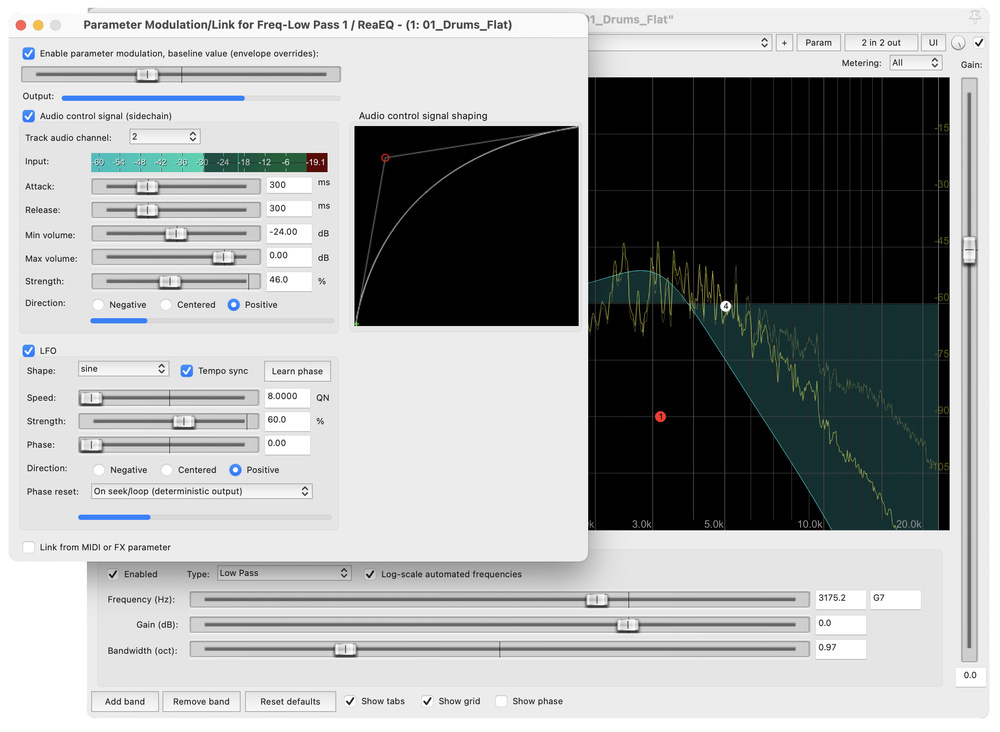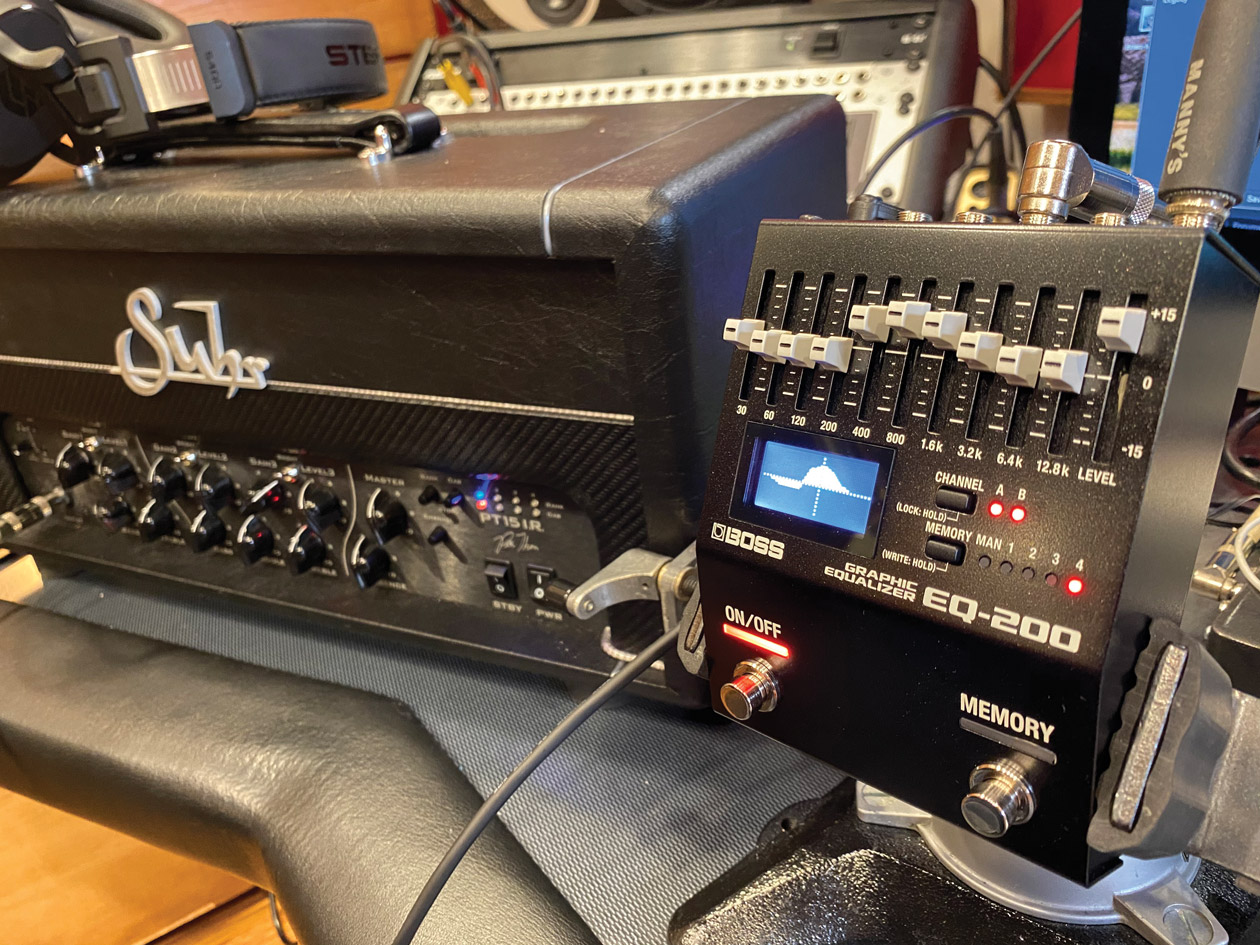Navigating the world of guitar pedals can be a daunting task. With so many options to choose from and endless combinations to experiment with, it’s easy to get lost in a sea of stompboxes. But fear not, my fellow tone junkies, for I am here to guide you through the murky waters of effects pedal signal flow. Get ready to unlock the secrets of perfect pedal order and take your sound to the next level. It’s time to master the art of signal flow and unleash sonic greatness upon the world.
Contents
- 1 Understanding the Basics of Signal Flow in Effects Pedals
- 2 Exploring the Impact of Gain-Based Effects on Your Tone
- 3 Navigating the Waters of Modulation and Time-Based Effects
- 4 The Crucial Role of Dynamics and EQ Pedals in Signal Chain Placement
- 5 Integrating Loop Switchers and Multi-Effects Units for Advanced Setups
- 6 Expert Tips for Experimentation and Fine-Tuning Your Pedal Order
- 7 Common Pitfalls to Avoid in Effects Pedal Signal Chain Configuration
- 8 FAQs
- 9 Rock on, pedal masters!
Understanding the Basics of Signal Flow in Effects Pedals
So, you’ve finally decided to dive into the world of effects pedals. Congratulations! You’re about to embark on a journey filled with mind-bending sounds and endless sonic possibilities. But before you start tweaking knobs and stomping on switches, it’s important to understand the basics of signal flow in effects pedals.
Imagine your guitar signal as a brave little explorer navigating through a treacherous jungle of pedals, each with its own unique abilities and quirks. In order to emerge victorious on the other side, your signal must follow a certain path, known as signal flow. Here’s a crash course in the basics:
Input: This is where your guitar signal enters the pedal. Think of it as the gateway to a magical realm where your tone will be transformed in ways you never thought possible.
Effects: This is where the real magic happens. Whether you’re looking for lush reverb, gritty distortion, or trippy modulation, the effects section is where you’ll find them. Experiment with different combinations to discover your own signature sound.

Exploring the Impact of Gain-Based Effects on Your Tone
Are you tired of your guitar tone sounding a little lackluster? Maybe it’s time to explore the impact of gain-based effects on your tone. Gain-based effects can add warmth, grit, and depth to your sound, taking it from meh to marvelous in just a few clicks of a pedal.
First up, let’s talk about overdrive. This little beauty can add a touch of crunch to your tone, perfect for those rockin’ solos or ripping riffs. It’s like adding a sprinkle of spice to your musical soup - it just makes everything taste better. Plus, dialing in the right amount of overdrive can really make your guitar sing, turning even the most mundane licks into melodic magic.
Next, we have distortion. This bad boy is like overdrive’s rowdy cousin, kicking your tone into high gear with a healthy dose of aggression. Think of it like adding a shot of espresso to your morning brew – it’ll wake you up and get you ready to conquer the day. From heavy metal shredding to grunge-inspired power chords, distortion is a game-changer when it comes to shaping your sound.
And let’s not forget about fuzz. This quirky effect adds a woolly, velvety texture to your tone, perfect for those psychedelic jams or retro-inspired grooves. It’s like wrapping your guitar in a cozy blanket of sound, creating a sonic landscape that’s as unique as you are. So why not take a leap into the wild world of gain-based effects and see how they can transform your tone?

So you’ve decided to dive into the world of modulation and time-based effects, huh? Brace yourself for a wild ride through the sonic seas, my friend. These effects can take your audio from drab to fab in no time, but navigating through them can be a bit like sailing through a stormy sea.
First up, let’s talk about modulation effects. These bad boys can add some serious movement and depth to your sound, but they can also quickly turn your audio into a hot mess if you’re not careful. From chorus to phasers to flangers, there are endless possibilities to explore. Just remember, moderation is key! Too much modulation can leave your audio sounding like a drowning robot.
Next, we have time-based effects. Delay and reverb are like the bread and butter of the audio world. They can add lushness and space to your sound, but they can also muddy up the mix if you’re not careful. Experiment with different settings and find the sweet spot that takes your audio to the next level.
As you navigate the waters of modulation and time-based effects, remember to trust your ears and have fun with it! There’s no right or wrong way to use these effects, so don’t be afraid to get a little creative. Just be sure to keep a life jacket handy in case things start to get a little too wild.

The Crucial Role of Dynamics and EQ Pedals in Signal Chain Placement
When it comes to crafting the perfect signal chain for your guitar setup, it’s important to understand the crucial role that dynamics and EQ pedals play in the process. These pedals can make all the difference in shaping your tone and bringing out the best in your playing. Here’s why they should never be overlooked:
Dynamics pedals, such as compressors and sustainers, are like the therapists of your signal chain. They help smooth out your playing, even out inconsistencies in volume, and make your notes sing with sustain. Think of them as the calming influence in a world of wild guitar sounds. They can add a touch of polish to your tone and make everything sound more cohesive.
On the other hand, EQ pedals are like the makeup artists of your signal chain. They can sculpt your tone, boost certain frequencies, cut out unwanted noise, and make your guitar sound its best. With an EQ pedal, you can dial in the perfect amount of brightness, warmth, or bite to suit your playing style. It’s like giving your guitar a makeover every time you step on the pedal.
So, the next time you’re setting up your signal chain, remember the crucial role that dynamics and EQ pedals play. They may not be the rockstars of your pedalboard, but they are the unsung heroes that can take your tone from mediocre to magnificent. Treat them right, place them in the right spot in your signal chain, and watch as they elevate your sound to new heights.

Integrating Loop Switchers and Multi-Effects Units for Advanced Setups
Are you tired of lugging around a million pedals in your gig bag, only to spend hours trying to figure out the perfect combination for each song? Well, fear not, my fellow musicians, for I have discovered the ultimate solution to all your pedalboard woes: integrating loop switchers and multi-effects units into your setup.
Picture this: you’re on stage, effortlessly switching between different pedal combinations with just the tap of a footswitch. Your tone is pristine, your sound is massive, and the audience is eating out of the palm of your hand. All thanks to the magic of loop switchers and multi-effects units working in perfect harmony.
With the power of loop switchers, you can easily organize your pedals into different loops, allowing you to activate multiple effects with just one footswitch. No more tap dancing all over your pedalboard like a caffeine-fueled tap dancer. Just seamless transitions between different sounds, all controlled with the flick of a switch.
And let’s not forget about the versatility of multi-effects units. With just one compact unit, you have access to a myriad of effects, amp simulations, and even built-in tuners. It’s like having your own personal army of tone warriors at your disposal, ready to conquer any musical battlefield.
So, my friends, take my advice and take your pedalboard to the next level by integrating loop switchers and multi-effects units into your setup. Your back, your sanity, and your ears will thank you. And who knows, maybe you’ll even become the envy of every guitarist in town.
Expert Tips for Experimentation and Fine-Tuning Your Pedal Order
When it comes to pedal order, there are endless combinations to try out. But fear not, fellow pedal enthusiasts! Here are some expert tips to help you navigate through the world of experimentation and fine-tuning:
First things first, think of your pedalboard as a delicious sandwich. You wouldn’t want to put the mayo before the meat, right? Similarly, start with your essentials like tuners or compressors at the beginning of the chain, followed by your tone shapers like overdrives and distortions, and end with time-based effects like delays and reverbs. Just like a well-constructed sandwich, the order matters!
Don’t be afraid to shake things up and try new combinations. Mix and match different pedals to see what sounds best to your ears. Who knows, pairing an octave pedal with a phaser might just create a sonic masterpiece that will have your audience begging for more!
Lastly, don’t forget to listen to your pedals individually and in different combinations. This will help you understand how each pedal interacts with one another and will give you a better sense of what works best for your unique sound. Experimentation is key, so go forth and fine-tune your pedal order like the rockstar you were born to be!
Common Pitfalls to Avoid in Effects Pedal Signal Chain Configuration
When it comes to setting up your effects pedal signal chain, there are a few common pitfalls that many guitarists fall into. Avoid these mistakes to ensure your tone is on point!
First off, don’t forget about impedance mismatching. This can seriously degrade your signal and lead to tone suck. Make sure your pedals are all running at the same impedance level to keep your sound crisp and clear.
Another pitfall to steer clear of is overloading your signal chain with too many pedals. While it may be tempting to have every effect under the sun at your disposal, too many pedals can muddy up your sound. Be selective and only include the effects that truly enhance your tone.
Lastly, watch out for placing your time-based effects in the wrong spot. Delay and reverb pedals should typically go towards the end of your chain to avoid muddying up your signal. Placing them too early can result in a messy mix that lacks definition.
FAQs
Q: How can I avoid losing the original tone of my guitar when using effects pedals?
A: Ah, my friend, the key to preserving your guitar’s original tone lies in the magical art of proper pedal order! By understanding the flow of your signal through your effects pedals, you can ensure that your guitar’s pure essence remains untouched.
Q: What is the optimal order for arranging effects pedals in a signal chain?
A: Picture this: your signal is like a beautiful river flowing through a lush forest. To maintain its natural beauty, you must arrange your pedals in a specific order. Start with dynamics (compression), then move on to filters (wah-wah) and drives (overdrive/distortion), followed by modulation (chorus, flanger), time-based effects (delay, reverb), and end with your handy-dandy noise gate for a squeaky clean finish.
Q: Why is it important to consider the order of effects pedals in my signal chain?
A: Think of your signal chain as a gourmet meal – you wouldn’t serve dessert before the main course, would you? Each pedal affects the signal in a unique way, and the order in which you stack them can dramatically alter your tone. By mastering the flow of your pedals, you can create a sonic masterpiece that will make your ears weep with joy.
Q: Can I experiment with different pedal orders to find my own unique sound?
A: Absolutely! The beauty of effects pedals is that they allow for endless experimentation. Feel free to mix and match pedal orders to discover new and exciting tones. Who knows, you might stumble upon a hidden gem that sets your sound apart from the rest. So go forth, brave pedal warrior, and unleash your creativity!
Rock on, pedal masters!
Congratulations, you’ve now unlocked the secrets to creating the perfect effects pedal signal flow. Remember, pedal order is crucial for shaping your sound and unleashing your inner rock god/goddess. So go forth, experiment with different combinations, and let your creativity run wild! Keep on shredding and rocking out, because with great power comes great pedal order. Until next time, keep on jamming!



